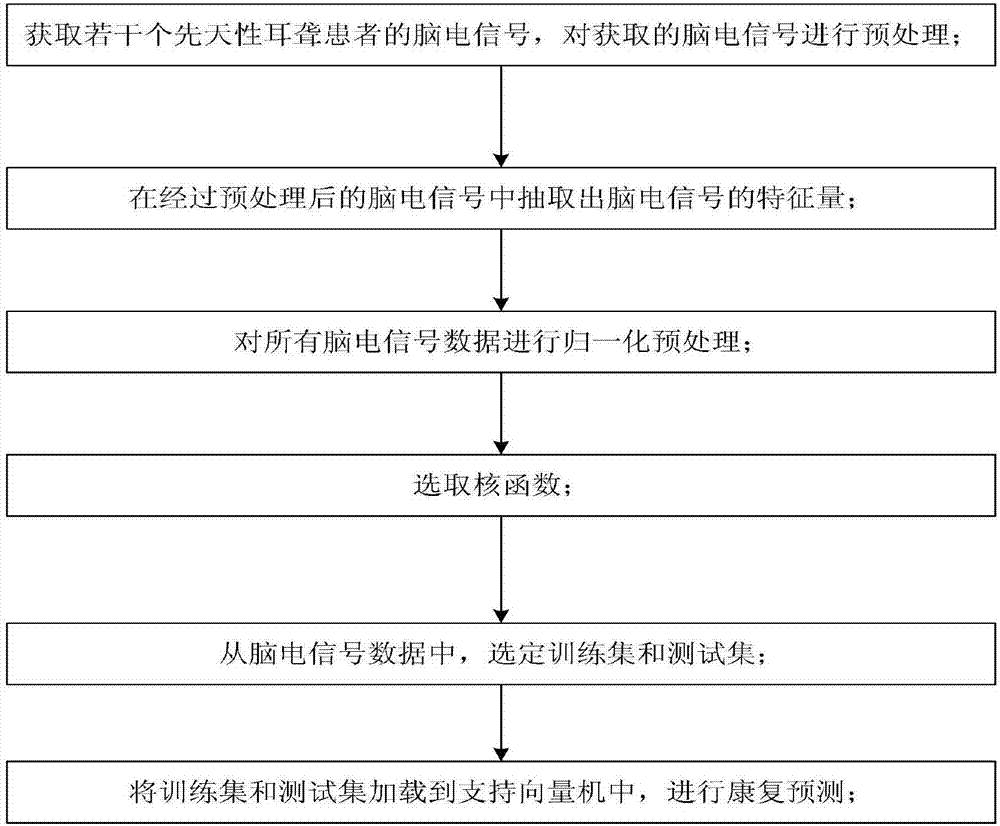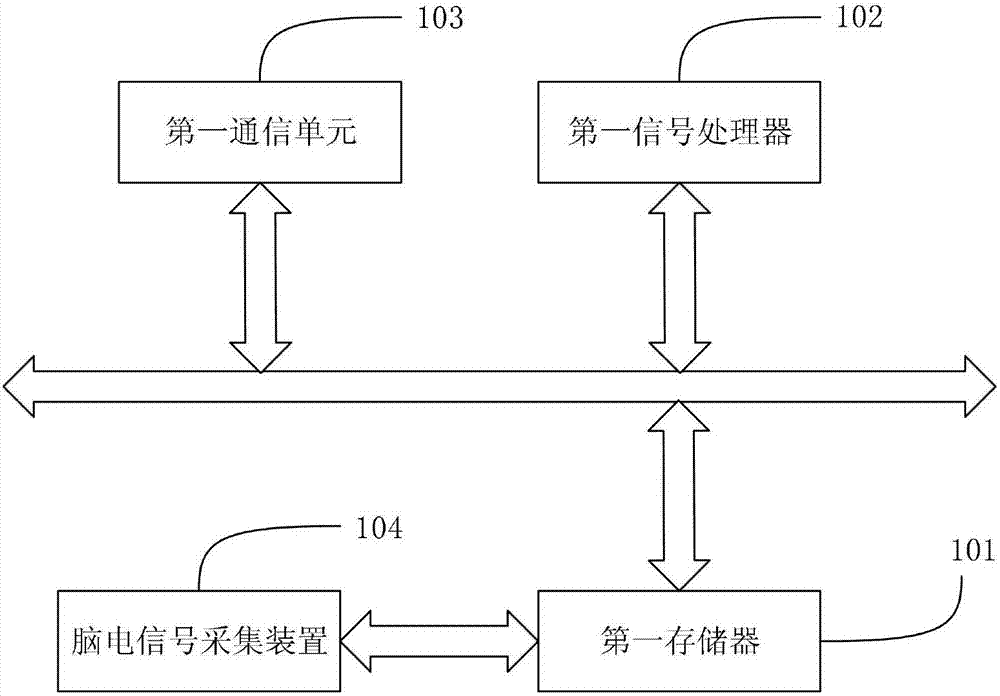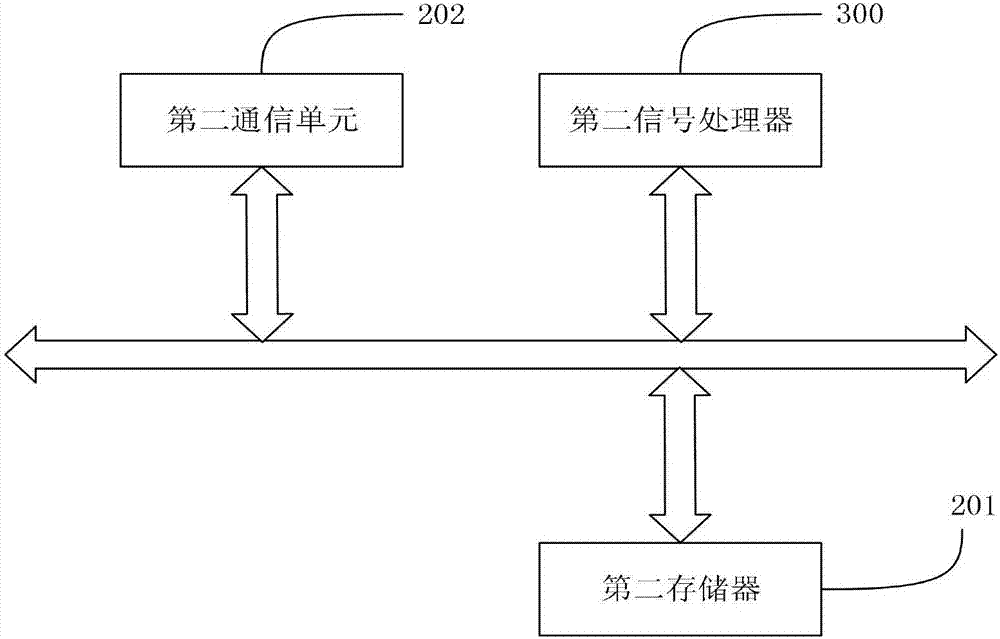Rehabilitation prediction method and system of deaf patient after CI operation based on machine learning
A technology of machine learning and prediction methods, applied in sensors, medical science, diagnostic recording/measurement, etc., can solve problems such as difficulties in exploring working mechanisms
- Summary
- Abstract
- Description
- Claims
- Application Information
AI Technical Summary
Problems solved by technology
Method used
Image
Examples
no. 1 example
[0067] In the first embodiment, a method for predicting postoperative rehabilitation of deaf patients based on machine learning after CI is characterized in that the prediction method includes:
[0068] Obtain the EEG signals of several congenitally deaf patients, and preprocess the obtained EEG signals;
[0069] Extracting the feature quantity of the EEG signal from the preprocessed EEG signal;
[0070] Perform normalized preprocessing on all EEG signal data;
[0071] Choose a kernel function;
[0072] From the EEG signal data, select a training set and a test set;
[0073] Load the training set and test set into the support vector machine for rehabilitation prediction.
[0074] Further, the method for extracting the feature quantity of the EEG signal from the preprocessed EEG signal includes:
[0075] Obtain the source location result;
[0076] Perform T check;
[0077] The Kendall coefficient correlation test was performed.
[0078] Specifically, the method for obtai...
no. 2 example
[0096] The second embodiment, a machine learning-based rehabilitation prediction system for deaf patients after CI, is characterized in that the system includes:
[0097] The signal acquisition part is used to collect EEG signals and preprocess the EEG signals;
[0098] The signal processing part is used to process the preprocessed EEG signal, and send the processed result to the support vector machine;
[0099] A support vector machine is used to load the processed results for rehabilitation prediction.
[0100] Further, the signal acquisition part includes:
[0101] An EEG signal collection device, used for collecting EEG signals;
[0102] The first memory is used to store the collected EEG signals;
[0103] a first signal processor, configured to preprocess the collected EEG signals;
[0104] The first communication unit is used for communicating with the signal processing part.
[0105] Further, the signal processing part includes:
[0106] The second communication u...
PUM
 Login to View More
Login to View More Abstract
Description
Claims
Application Information
 Login to View More
Login to View More - R&D
- Intellectual Property
- Life Sciences
- Materials
- Tech Scout
- Unparalleled Data Quality
- Higher Quality Content
- 60% Fewer Hallucinations
Browse by: Latest US Patents, China's latest patents, Technical Efficacy Thesaurus, Application Domain, Technology Topic, Popular Technical Reports.
© 2025 PatSnap. All rights reserved.Legal|Privacy policy|Modern Slavery Act Transparency Statement|Sitemap|About US| Contact US: help@patsnap.com



